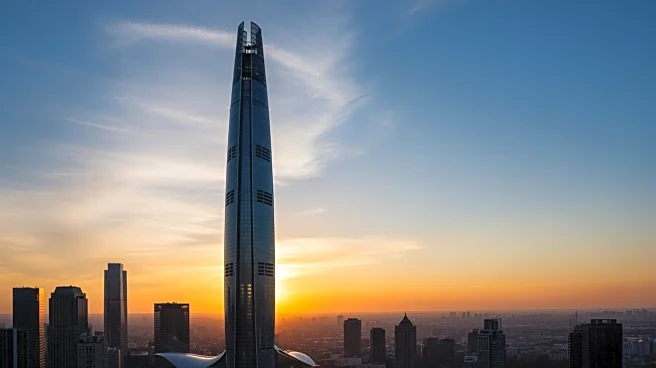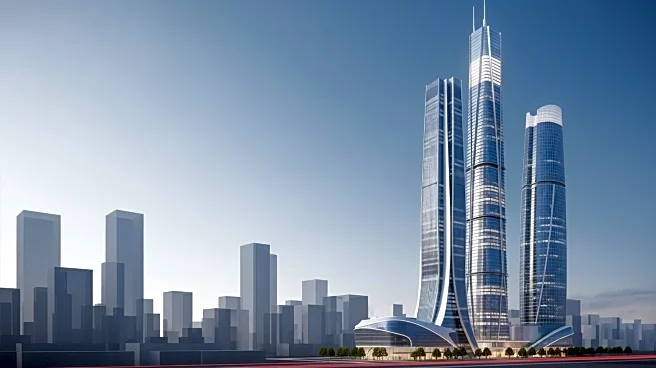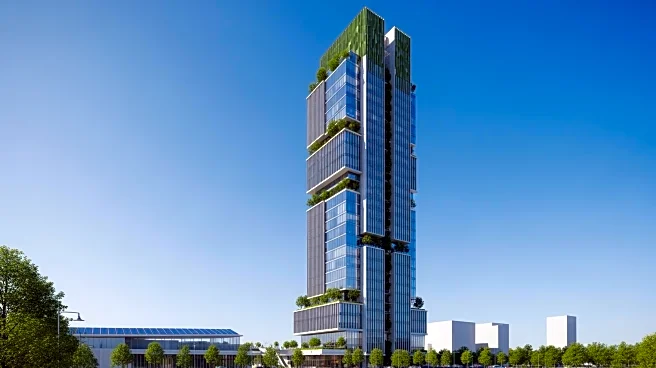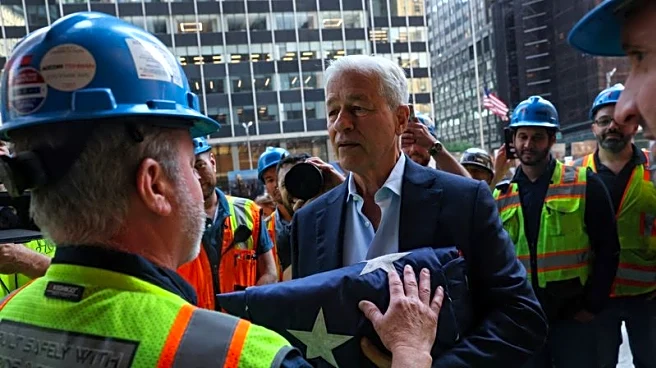What's Happening?
JPMorgan Chase has officially opened its new 60-story headquarters at 270 Park Avenue in New York City, marking a significant architectural addition to the city's skyline. The copper-toned steel tower,
which cost $3 billion to construct, replaces the Union Carbide Building that stood on the site for nearly 60 years. The new headquarters is designed to accommodate approximately 10,000 of JPMorgan's 24,000 New York-based employees. The building features 2.5 million square feet of space and includes a block's worth of public area. It also houses JPMorgan's trading operations across eight floors and showcases five newly commissioned artworks. The construction was led by Foster + Partners, requiring a complex demolition of the previous structure due to its location above Metro North Railroad tracks.
Why It's Important?
The opening of JPMorgan Chase's new headquarters is a testament to the company's commitment to New York City, where it has been a major employer for 225 years. This development is significant as it represents one of the first major office buildings constructed post-COVID pandemic, potentially setting a precedent for future corporate investments in urban office spaces. The building's design and amenities are aimed at attracting and retaining talent, emphasizing the importance of in-office work. This move could influence other corporations to invest in similar projects, impacting the commercial real estate market and urban development in New York City.
What's Next?
With the completion of the new headquarters, JPMorgan Chase plans to begin renovations on its 383 Madison Avenue building, which was previously the headquarters of Bear Stearns. This renovation is part of JPMorgan's broader strategy to consolidate its operations and enhance its facilities in New York City. The bank's continued investment in its infrastructure may lead to further developments in the city's commercial real estate sector, potentially influencing other companies to follow suit.
Beyond the Headlines
The construction of JPMorgan's new headquarters highlights the evolving landscape of corporate office spaces in the post-pandemic era. As companies reassess their real estate needs, the emphasis on creating attractive and functional work environments could lead to a shift in how office buildings are designed and utilized. This development also underscores the importance of New York City as a global financial hub, with major corporations continuing to invest in the city's infrastructure despite challenges posed by remote work trends.












